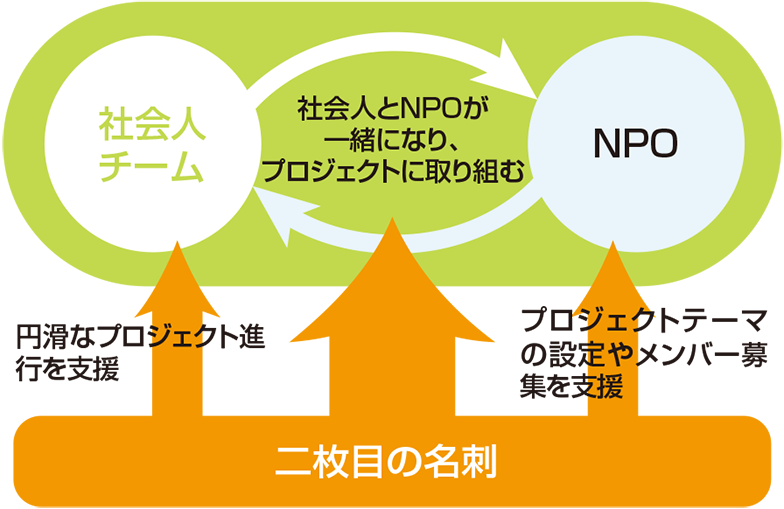As the next generation evolves, so too do ways of working in society. We spoke with Professor Tsunehisa Ishiyama of Hosei University's Graduate School of Policy Creation, who advocates for the diversification of new working styles by broadly interpreting the concept of "parallel careers" proposed by Peter Drucker, often called the godfather of management.
Social activities while working offer significant benefits as a working adult
It's often said that "the lifespan of an organization is 30 years." Indeed, companies going bankrupt or being absorbed through mergers is a common occurrence. On the other hand, knowledge workers have the potential to work well into their 70s and 80s. Knowledge workers have outlived organizations. As one way of living in such an era, the concept proposed by Peter Drucker, known as the "God of Management," is the "parallel career." He encourages people to build a second world not just through company work, but also through social activities like helping at churches or in the community. It's essentially "Work × Social Activities," but I interpret it more broadly, envisioning parallel careers like "Work × Work," "Work × Learning," and "Work × Pursuing a Hobby to the Extreme." Simply put, it means the company isn't everything. A concrete example of "Work × Social Activity" is participating in NPO activities while working at a company.
Whenever I mention this, I inevitably get the same counterarguments. One is, "They're escaping to NPO work because they can't handle their job." The other is, "People who achieve results at work wouldn't have time for NPO work." Both stem from the underlying belief that one should focus solely on one job. But I want people to know that balancing work with social activities brings immense rewards.
The greatest benefit is encountering people with diverse values. Many also learn to use their time efficiently to balance their main job with social activities. Additionally, setting goals to solve problems and devising strategies to achieve them allows you to experience the process of launching a new venture – something rarely encountered in a corporate setting. Furthermore, social activities often permit progress through trial and error, which also contributes to participants' growth. It's easy to imagine how business professionals who grow through these experiences will change their approach to work within their companies.
The "Second Business Card" activities offer the fun of an adult club
The NPO "Second Business Card" puts this concept into practice. For working adults wanting to pursue a parallel career, jumping straight into social activities can be daunting. That's where Second Business Card steps in as an "intermediary support organization," connecting NPOs aiming to advance their missions with business professionals who resonate with their causes. Their track record includes over 30 projects, such as one creating an environment for students with hearing impairments to learn in regular high schools.
The specific process involves forming a team of about five business professionals registered with Second Business Card. They launch and support projects that advance the initiatives of the supported NPO. What sets this team apart from a company is that members come from diverse industries, sectors, companies, ages, and positions—everyone is on equal footing. With no boss, each member must define their own role.
Another key point is setting a defined timeframe of about 3 to 6 months. Many people hesitate to join social activities or volunteer work, worried they might find it hard to quit. However, having a fixed duration makes it easier to participate with a lighthearted attitude. This "lightheartedness" also applies to the skills you bring. You might think, "I probably won't be useful without special skills," but anyone can participate as long as they have general business skills. Because it's easy to join and driven by passion, I describe activities under the Second Business Card as "adult club activities."
Think of it like a third place. It's a comfortable space that's neither home nor workplace. If your workplace is your entire world, losing it through downsizing or retirement can make you feel like you've lost your world, pushing you to the brink mentally. But if you have a third place and are active in social activities outside work, you feel needed, which eases the mental burden and helps you stay resilient.
It's not just individuals; companies are also starting to utilize second business cards. One financial systems company, for instance, involves employees in projects to cultivate mid-level leaders, exposing them to diverse values. In routine operations with fixed members and tasks, people can get by without truly understanding their real strengths and weaknesses. But in projects, you must figure out your role yourself as you move forward. That's where your true strengths become apparent.
A wave of diversification in work styles is coming
When discussing parallel careers or secondary business cards, I sometimes hear reactions like, "So parallel careers will replace Japan's long-term employment model, right?" or "This is the complete opposite of the Japanese employment model, isn't it?" But that's not the case. While Japan is changing, it fundamentally has many long-standing companies, and the majority of people work securely under long-term employment. In a sense, this is Japan's asset. Rather than forcibly eliminating it, it's perfectly fine to work at such companies while gaining experience through a parallel career, feeding back the insights gained to your main employer. Alternatively, you could leverage new strengths discovered through your parallel career to change jobs. For example, some people might work two days a week at each job – I think various forms like this are perfectly acceptable. Right now, I sense the tide of an era where these work style choices are increasing and diversifying. Alongside this diversification of work styles, I believe the concept of parallel careers will spread explosively. For that time, I think it's crucial that organizations like the "second business card" concept proliferate.



